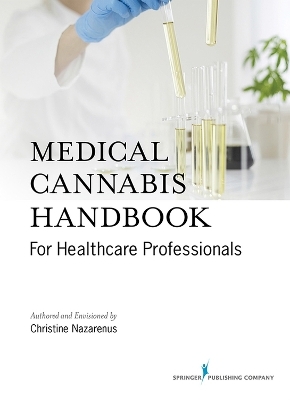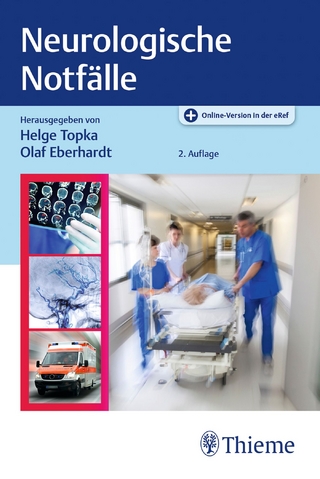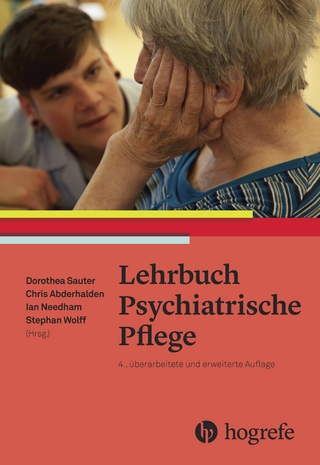
Medical Cannabis Handbook for Healthcare Professionals
Springer Publishing Co Inc (Verlag)
978-0-8261-3563-6 (ISBN)
- Lieferbar (Termin unbekannt)
- Versandkostenfrei innerhalb Deutschlands
- Auch auf Rechnung
- Verfügbarkeit in der Filiale vor Ort prüfen
- Artikel merken
Medical Cannabis Handbook for Healthcare Providers delves into the biology of the endocannabinoid system, the main receptor system responsible for the effects of cannabis. It addresses how cannabis interacts with the body, its effects, and side effects, and how to manage cannabis-drug interactions. Chapters discuss in detail how to talk to patients, what language providers can and cannot use protocols for patient-centered dosing, and the variety of available cannabinoid pharmaceuticals. Based on the newest research, this book demonstrates the efficacy of cannabis in treating a broad range of symptoms and conditions. Written for any healthcare provider who might have to answer patient questions about medical cannabis, this handbook dispels common myths and confirms little-known facts about medical cannabis.
Key Features:
Includes easy access graphics of individual legislation status for all 50 states
Delivers the most up-to-date, evidence-based research on medical cannabis to enhance understanding of this complex topic
Provides historical, legal, and biological content so that prescribers can confidently recommend medical cannabis to patients
Dispels common cannabis myths and misinformation
Discusses pain management regarding cannabis and opioids
Co-published with MM411, the first medical cannabis education provider to offer online CME, CPE and CNE courses to health professionals worldwide
Christine Nazarenus – Medical Marijuana 411 Before founding Medical Marijuana 411, Ms. Nazarenus successfully sold, implemented, and configured Digital Asset Management Systems for Fortune 500 companies and some of the largest publishers in the world. She is an expert in social media and digital strategies and is a content management specialist offering digital consulting services to top brands for their online strategies. It was after securing a contract with a major retailer out of Chicago, that Chris had an opportunity to help the Indianapolis Motor Speedway with an archive strategy. In 1998, she then had the vision to “flip” the traditional archival strategy and develop an online strategy unheard of at the time. She would leave the corporate world to launch her first start up, Artemis Images with the Indianapolis Motor Speedway as her first client. Ms. Nazarenus has been quoted in D.A. Benton’s book, How to Act Like a CEO. Artemis Images’ business case is featured in Technology Ventures – From Ideas to Enterprise, McGraw Hill and studied by MBA students worldwide. In 2007, Chris was a nominee for the prestigious Denver Business Journals’ Woman Entrepreneur of the Year. Chris is a graduate of the University of Puget Sound.
Foreword by Jack Cox, MD, MMM
Acknowledgments
Legal Landscape
An Ancient Plant for Modern Illnesses
The Discovery of the Endocannabinoid System
The Endocannabinoid System
Cannabinoids and Terpenes
Cannabinoid Pharmaceuticals
Getting Cannabinoids Into The Bloodstream
Patient Centered Dosing
Laboratory Testing
Clinical Practice
Cannabis and Opioids
Side Effects Of Cannabis Use
Medical Marijuana Myths And Facts
Glossary of Terms
Index
OVERVIEW OF CHAPTERS
CHAPTER 1: LEGAL LANDSCAPE
This introductory chapter is intended to enable medical professionals to better understand the legal terrain of medical cannabis. It provides clinicians with an overview from a legal perspective of relevant medical cannabis regulations and what clinicians may and may not do when discussing cannabis in the context of a patient visit.
CHAPTER 2: AN ANCIENT PLANT FOR MODERN ILLNESSES
This chapter charts the development and spread of cannabis and its various uses as a fiber, as a food, and as a medicine as far back as 5,000 years ago. Cannabis was an essential treatment for the ancient Chinese, the Indian Ayurvedics, as well as the Victorians who adopted it into the Western Pharmacopoeia in the mid-1850s. It was used in Europe and North America as a household tonic until its prohibition in 1937 in the United States.
CHAPTER 3: THE DISCOVERY OF THE ENDOCANNABINOID SYSTEM
This chapter charts how the 1964 discovery of tetrahydrocannabinol (THC) and cannabidiol (CBD) led to the 1988 discovery of the Endocannabinoid System (ECS), the largest receptor system and the master regulator of homeostasis in the human body. This chapter also discusses how and why cannabinoids (endogenous and external) interact with CB1 and CB2 receptors to treat a vast number of illnesses.
CHAPTER 4: THE ENDOCANNABINOID SYSTEM
The Endocannabinoid System is deeply involved in maintaining homeostasis, neuroprotection, and other regulatory functions, many of which have yet to be discovered. It consists of endocannabinoids produced by the brain and a network of cannabinoid receptors located throughout the body. This chapter will provide an overview of how this system functions and how it is involved in so many disease states.
CHAPTER 5: CANNABINOIDS AND TERPENES
This chapter discusses endogenous and exogenous cannabinoids and the mechanisms through which they interact with the vast network of receptors in the Endocannabinoid System (ECS). It also discusses some of the other cannabinoids and terpenes naturally occurring in cannabis and the differences between treating with botanical medicines versus single molecule compounds.
CHAPTER 6: CANNABINOID PHARMACEUTICALS
This chapter is an educational overview listing the research, intended use, and availability of all FDA approved cannabinoid medications in the U.S. today. It is a resource for medical professionals who may prescribe these FDA-approved cannabinoids or who are assisting patients that are currently taking these cannabinoids as part of their prescribed treatment plan.
CHAPTER 7: GETTING CANNABINOIDS INTO THE BLOODSTREAM
This chapter familiarizes medical professionals with the many methods of delivering cannabinoids into the bloodstream — inhalation, oral mucosal absorption, edibles, and topicals — plus the advantages and disadvantages of each. Included are written and visual descriptions of all of forms of medical cannabis that a patient might encounter in a dispensary, plus the instruments that deliver them. This section also includes guides to onset times, duration of effects, and bioavailability with each method.
CHAPTER 8: PATIENT CENTERED DOSING
This chapter gives medical professionals a method of assisting patients to self-administer consistent, measurable doses of a cannabis remedy that includes as much THC as the patient is comfortable taking. It also includes the latest research on drug-drug interactions and spells out the patients for whom cannabis is a relative contraindication.
CHAPTER 9: LABORATORY TESTING
This chapter familiarizes medical professionals with the most accurate methods of identifying the cannabinoid profiles of a plant and ensuring the product is free of contaminants and safe for patient use. It includes an overview of testing methods and a guide to interpreting laboratory results.
CHAPTER 10: CLINICAL PRACTICE
Over a half dozen countries are planning to institute legal medical cannabis programs by 2020. This chapter provides an overview of some of the illnesses cannabis is being used to treat. They include certain cancers, anxiety, pain, epilepsy, insomnia, GI disorders, neurodegenerative illnesses, post traumatic stress, and migraines.
CHAPTER 11: CANNABIS AND OPIOIDS
The opioid crisis in America is worsening daily with addiction rates and the associated costs of addiction soaring. Counter to its ill-founded reputation as a “gateway drug,” cannabis is proving to be more of a “terminus drug” that can increase the analgesic effects of opioid medications and also help patients cut their dosages.
CHAPTER 12: SIDE EFFECTS OF CANNABIS USE
This chapter discusses the adverse side effects of marijuana and marijuana products. It also discusses the risks of developing chronic conditions such as Cannabinoid Hyperemesis Syndrome and marijuana use disorder.
CHAPTER 13: MEDICAL MARIJUANA MYTHS AND FACTS
The history of marijuana research and science is littered with many fictions masquerading as facts. Now that you are aware of the latest science and methodologies of administering medical cannabis, it is important to review some of those myths to understand where they originated, how they have been perpetuated, and where the science-based truth lies.
| Erscheinungsdatum | 31.12.2019 |
|---|---|
| Zusatzinfo | 50 illustrations |
| Verlagsort | New York |
| Sprache | englisch |
| Maße | 152 x 229 mm |
| Gewicht | 333 g |
| Themenwelt | Medizin / Pharmazie ► Pflege ► Ausbildung / Prüfung |
| Pflege ► Fachpflege ► Neurologie / Psychiatrie | |
| Medizin / Pharmazie ► Pflege ► Palliativpflege / Sterbebegleitung | |
| ISBN-10 | 0-8261-3563-3 / 0826135633 |
| ISBN-13 | 978-0-8261-3563-6 / 9780826135636 |
| Zustand | Neuware |
| Haben Sie eine Frage zum Produkt? |
aus dem Bereich


